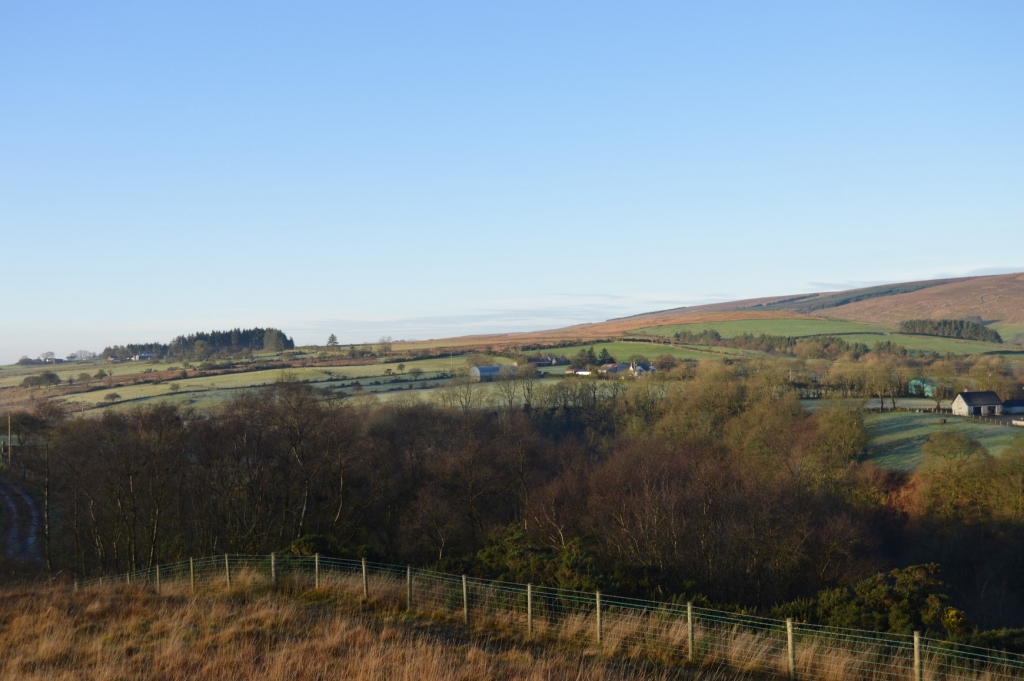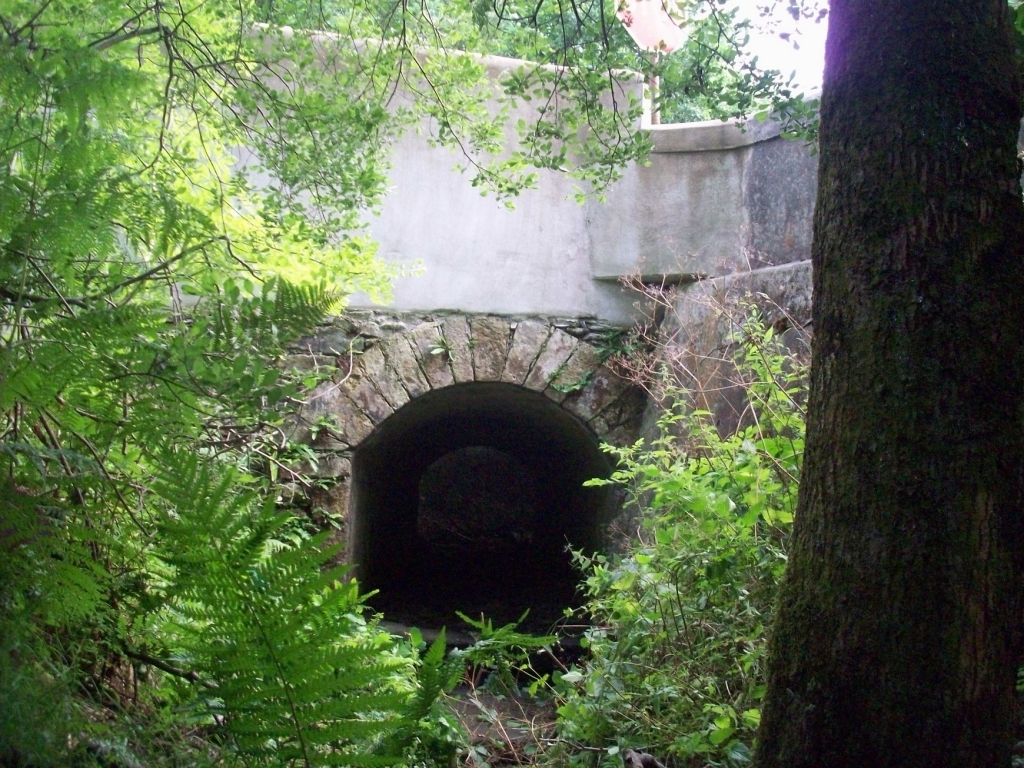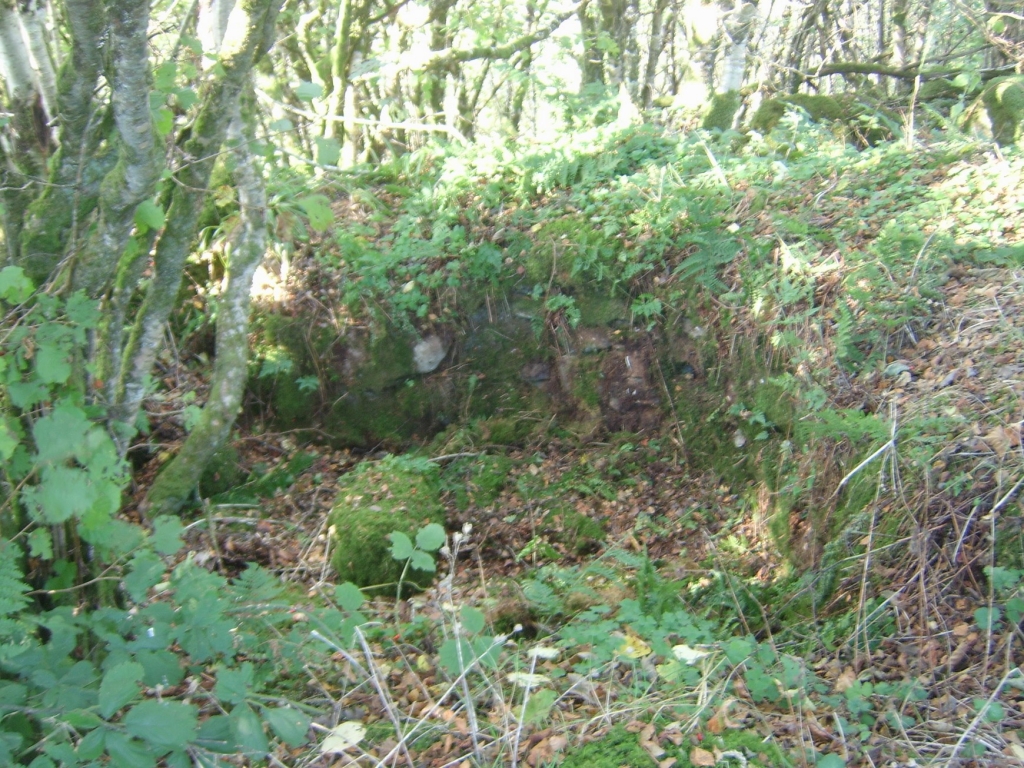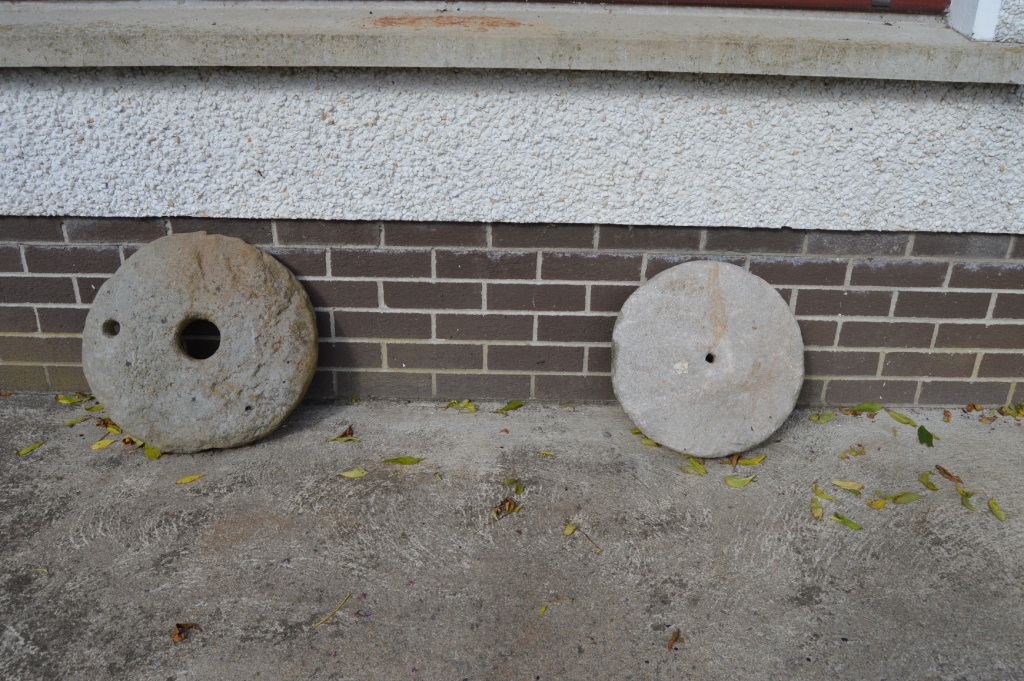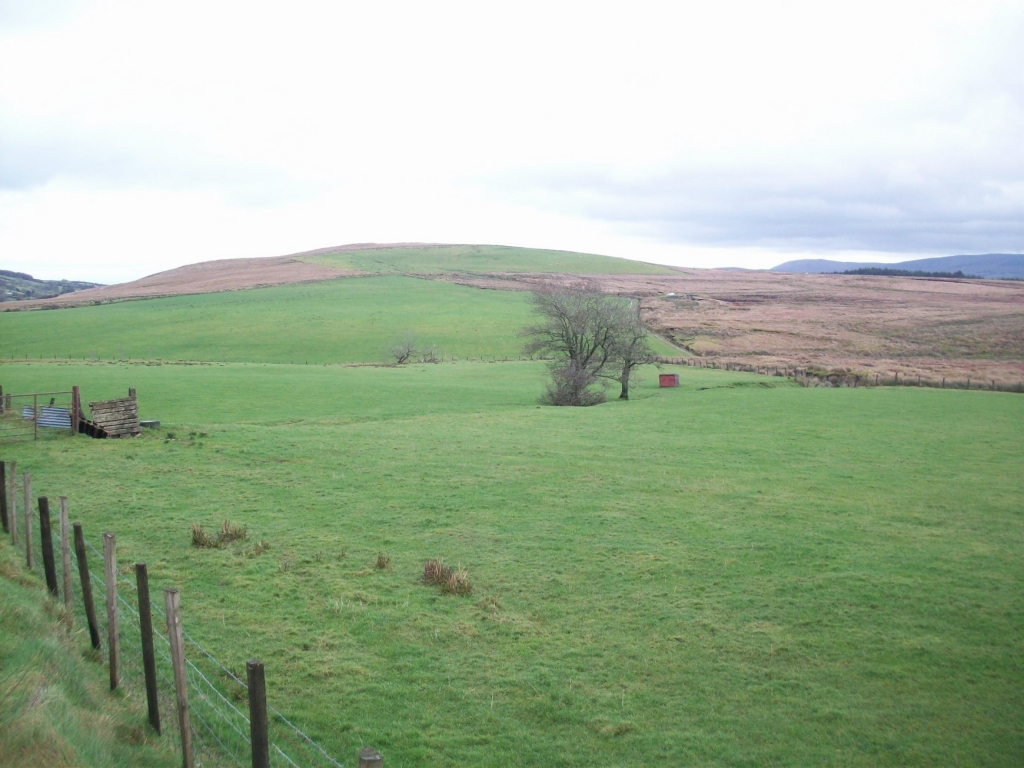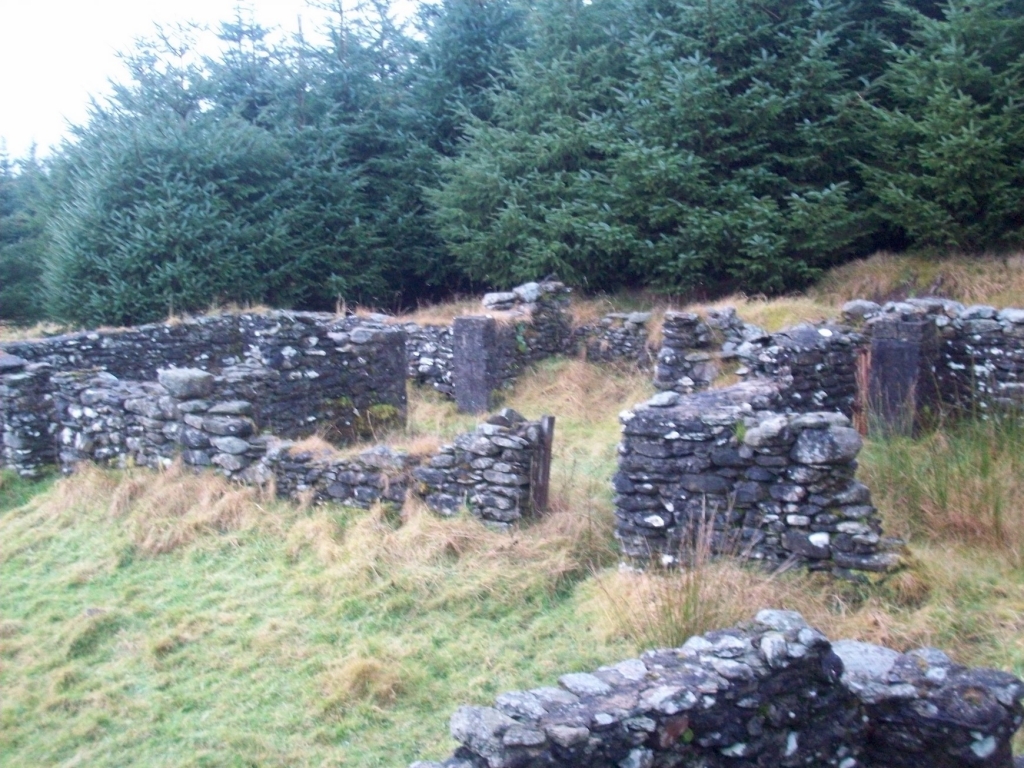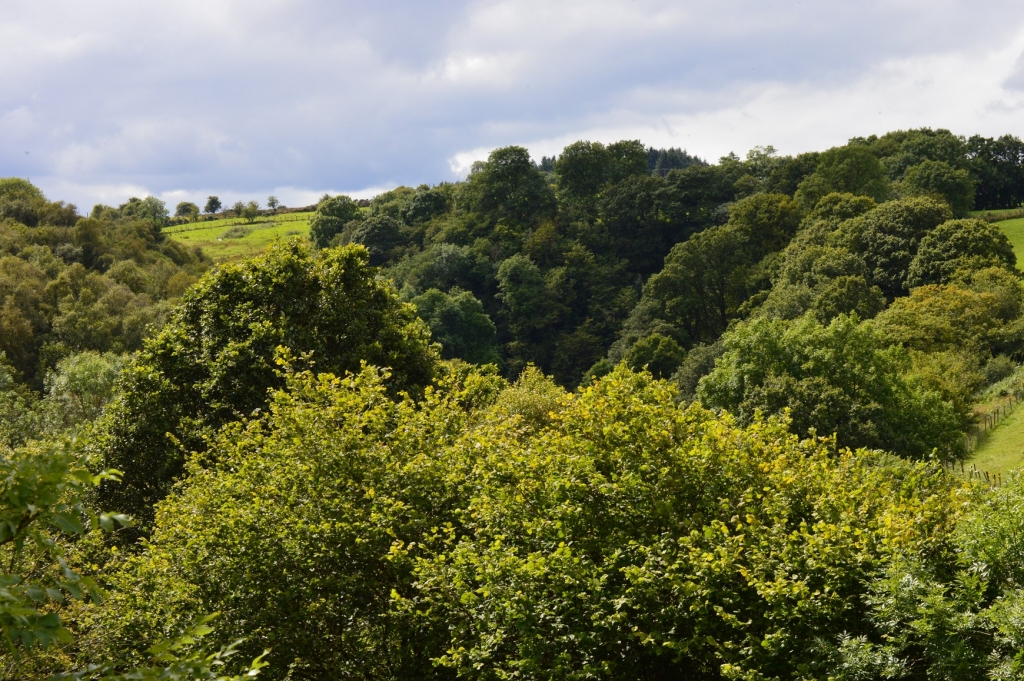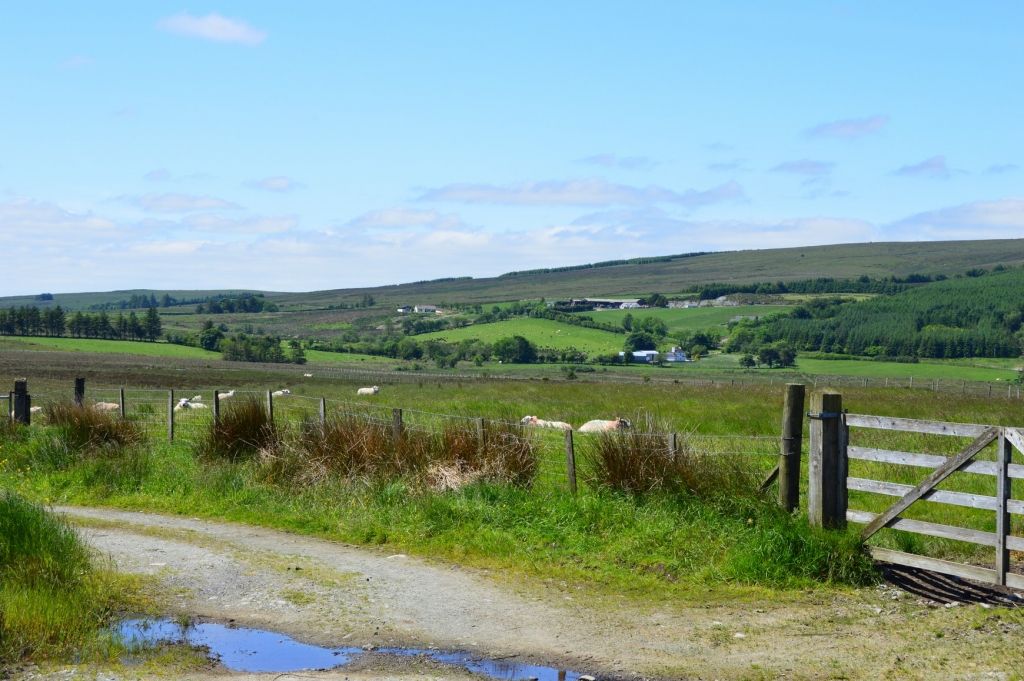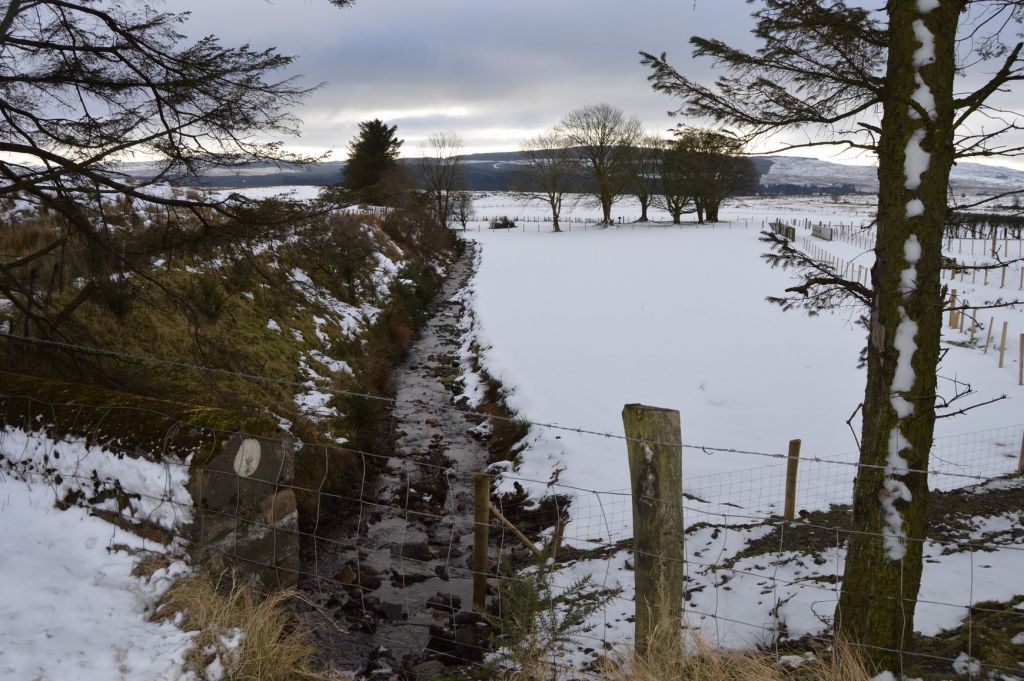Glenviggan.
The town land of Glenviggan lies to the south western end of the Sixtowns and is bounded by Broughderg and Davagh on one side and by Moyard and Tullybrick on the other. It consists of 1717 acres of generally rough pasture with some arable land. It starts off as a narrow strip at the banks of the Moyola between Moyard and Tullybrick and then loops around the back of Mullaghsiuraran before opening out to the upper end of the Sixtowns. The townland as we know it today was made up from Glenviggan, Eviskinavaddy and a small part of Moyard at its lower end.
There have been several suggestions as to what the proper meaning of Glenviggan is but it is most likely to be Gleann Bhig Fhinne. It is always a difficult task to find the Gaelic version of placenames but it is worth giving some attention to a particular reference made by Hugh O`Neill`s scribe, Tadgh O`Cianain in his account of O`Neill`s final journey from Tyrone to Rathmullan before going into exile. He refers to the party resting over in this area on their journey close to a lough.
“ on that Wednesday night of September, 1607, when, in the dense woods beside that lough, the Earl and his party of fugitives, spent the darkness of the night in the open”.
The lough he referred to, was Loch Beigfhine. This lough can not be located by modern historians but it is reckoned to have been situated in modern day Glenviggan. Geordie Barnett, who had a vast and intimate geological knowledge of the whole Sixtowns area, was convinced that the area of swamp which lies in a hollow of bogland and straddles the borders of Tullybrick and Glenviggan, is in fact, the site of the former lough. He maintained that no other place in the vicinity had impressed him so much as having at one time been under water. If that was the case then, the lough would have drained into the glen below and it would follow that this glen would be called Gleann Bhig Fhinne.
( pronounced —— gleann vig inn , or Glenviggan as it is today.) It would therefore make sense that the townland got the name of Glenviggan.
Possible site of Lough Viggan (Loch Bheag Fhinne)
There is another version offered by some people as “Gleann Veggan“ after St. Veggan who was a follower of St. Colmcille who was associated with the parish. The case for this translation is not as strong however.
Settlement in Glenviggan in the 1800`s
Glenviggan was sparsely populated up until around the early 1800`s with just small areas of settlement scattered throughout the area. It was not until the landlord moved new tenants up to that area that it became more widely populated. As a result there is no reference to its existence before the Griffiths Valuation in the 1850`s. There is mention of Glenviggan as a townland in the 1832 census list but it only has two householders and seems to have been the area close to Bealnamala bridge. Rather there is mention of Evishkinavaddy (the top). There are also families from the Crockmoran part listed in Moyard. It looks as though Eviskinavaddy, Glenviggan and Crockmoran were all merged into the modern townland of Glenviggan as we know it today. The reason why this happened was that the landlord at the start of the 1830`s was in the process of moving families like the Campbells, the Clearys, Kellys, Kielts and the Clerkins up there from the clusters lower down the Sixtowns to ease congestion and to create new sources of rent for himself.
– This farmland would have been broken in from the mountain pastures by those who moved up from lower parts in the early 1830`s.
On the Ordinance Survey Map of 1830, there are no signs of anyone living in that part of Glenviggan which lies above Crockmoran up to what is now the end of the Crockmoran road. This previously unoccupied pieces of mountain land in Glenviggan would have been used in common, as summer grazing land by the farmers from the Rundale farming era which existed before the arrival of the straight marches system favoured by the landlords. This was also the case in many other parts of the Sixtowns which were uninhabited up until the early part of the 1800`s. It also offers us a good means of tracing how long various families have lived in the townland.
The townlands and their names were designated for administrative purposes. The locals had names for specific areas within their townland which they used more freely. The older people would refer to the area at the top of Glenviggan as “Skiven“ which is a shortened form of Evishkinavaddy.
There was also reference at a time to a part of that area known as “the Coulies“ and this is another example of the smaller place names which have disappeared from local use. It seems that coulies are small hills. There is a reference to this place in an article written in the Journal of the Armagh Diocesan Historical Society, Dr. Seamus O`Ceallaigh tells us that the former PP of Ballinascreen , the late Dean McGlinchey told him that on one occasion he was conducting a station in the remotest part of his parish — in Glenviggan, on the Tyrone border. He was actually with a well known parishioner there — James Bradley (James Ned) and when the time came to be off, a discussion arose as to the easiest route out. It was agreed that the nearest way for the priest to go was to go along by the `Coolyes`as the Monsignor had thought that he had known all the sub names of his parish, he was surprised not to know this one. He described them as being a few isolated and peaty `cruncans` (crocans), which means `small hills`, set at intervals on the level. He had no idea what the name meant. Reference to this no longer used place name would suggest that at some time in the past that people were said to live in a particular place within a town land. The reason for the use of these smaller place names probably comes from the old Irish traditional intimate relationship with the land. This is evident from the many songs and poems made about local places all over Ireland. We can see this trend in the number of names for a hill in the Irish language, for example, each one to describe a different type of hill. As well as that there was a tradition of naming fields and other features within the boundaries of a farm. Most of these names were in Irish which further demonstrates this age old tradition.
Small place names.
This is Jigwore bridge (Dig Mhor …the big ditch) which joins Glenviggan to Moyard and like many of the small place names is sadly falling out of use.
There is a small hill in upper Glenviggan called Crocanlocha which means “the lough hill“ referring to the lough which was formally there. There is reference by locals in that part to “vigleanns“ which comes from the Gaelic words “bhig gleann“ which mean “small glen“. These small glens can be seen on the upper side of the main road emerging from the slopes of Eviskinavaddy. There is the “barterfield“ which means the march field (bairtir). Further down Glenviggan we have the “goolin field“ which means the shoulder (of the hill) field. “Gualainn“ means shoulder in Gaelic. Crockmoran means “Moran`s hill“. Sadly, so many of the place names have disappeared and are no longer referred to.
The area to the forefront of this photograph is called Crockmoran (Moran`s hill) and was possibly part of Moyard before 1840.
Early settlement in the Glenviggan area.
There is evidence that Glenviggan has been inhabited, to some extent, in the Neolithic age, as we have some remains still to be seen today . There is the remains of a sweat house in the glen at Crockmoran. According to the Archeological Survey of N.Ireland this sweat house is:
“situated in woodland towards the top of a steep glen, on the eastern side of a small river valley. It is situated directly the far side of a post and wire fence. The sweathouse is circular, approximately 3.5m in diameter. The dry stone built walls are approximately 1m thick and reach a maximum height of 1 metre above the interior. The interior, circa 2.5m in diameter is relatively clear, but some stones have fallen in and a number of small trees hamper access. The entrance is at the east, a 0.60m wide break in the wall.Around the outside of the circular ruin there is an amount of stone which has collapsed from the structure.”
This is the remains of a sweathouse from the Stoneage and lies in the Crockmoran Glen.
This would suggest considerable activity in the area and indeed the amount of stones to be seen in the vicinity of that glen would suggest that there is probably a lot of undiscovered remains here. The sandy nature of the soil would have been typical of that which these people would have worked. There is also the remains of what is thought to be a burial site at the upper end of Glenviggan just south of the main road.
This rock is of the same type found at most Neolithic monuments in the Sixtowns mountain areas. It has peculiar ribs through it. These stones are regularly found near significant Stone Age sites.
There is a peculiar large stone (above photo) in a field in Glenviggan which is of similar substance as that of the Bacan glas gelvin in Tullybrick which would suggest that it too had some significance in the area because of its shape. Also, the town land of Glenviggan is bordered on the southern side by an area which once had a dense population of Neolithic people. This is part of an area which stretches from Slieve Gallion to Creggan and was one of the most densely populated in Ireland. It would be fair to assume that habitation of this townland would have been substantial during that period. Unbelievably the next evidence of habitation in Glenviggan does not come until the Griffiths Evaluation of 1856. As already stated, there are no records for Glenviggan in the 1832 census.
Here we have two cairn stones which were found in Glenviggan and which were once used to grind oats. It is difficult to estimate there age but it could be hundreds of years as these stones were used in the 15th century in places.
The townland of Glenviggan is mostly of rough pasture and would have been one of the last areas to be set out to tenants by the landlord. It is most likely that the greater part of this town land would have been used as summer pasture in the days of Rundale farming in the Sixtowns area. Rosie Church can point out the ruins of a “boley house” close to the family farm at the top end of Glenviggan where the children used to play when she was young. They always referred to it as “the boley house”.
– This area of Glenviggan would have been summer pasture land during the Rundale days.
The boley house was where the herders would have lived in the Rundale days when they took their stock up to spend the summer grazing on the mountain pastures, It was usually the women and young ones who did this while the men stayed down on the arable land to tend to the crops.
The O.S.Memoirs tell us how the landlord had been improving his estate by taking “ the mountainous parts of that subdivision, which remained a barren and unproductive waste for centuries back” and that,
“he has subdivided the mountains into farms of different sizes and sold them out free or at least at a very trifling annual rent, for a wilful period to such of his tenantry as are able or willing to cultivate them.”
It goes on to tell us that “a number of these mountain farms are already occupied by many of his tenants who formerly held limited parcels of ground on the lowlands and are now building farmhouses, office houses and making gardens and small plantings on these new tenements. They are receiving some assistance of building materials from the proprietor.” There were benefits here for both the tenants and the landlord. The tenants had a larger farm to support their growing families and the landlord was increasing the operational size of his estate.”
These ruins would have been of houses built in the 1830`s in isolated parts of Glenviggan.
One way or another, the upper end of the town land of Glenviggan became permanently populated. The names of the families who populated this area were not the names familiar to that part of the Sixtowns, e.g. Campbell, Clerkin, Kielt and Kelly.
The circumstances which brought these people to Glenviggan were as follows. The Rundale system was one that served the people well when the population remained low and static, with land being divided out to residents of the clachans/clusters in the usual traditional manner. When someone died then their plots were reallocated to next of kin or some family in need and so the system continued to work to the benefit of all. However, towards the end of the 18th century, the population began to rise sharply and as it continued to do so, the Rundale, as a workable system, began to come under increasing pressure. The clachans could not cope with this sharp rise in numbers and something had to give. It just happened to be that the landlords all around the Sperrins had plans to expand their estates by designating lands that were lying barren or unoccupied up until that time, and putting tenants on them. These landlords were referred to at the time as “improvers.” The situation, as regards the difficulties in the clachans, suited their ambitions. People needed land and the landlords needed tenants to take these lands. The end result was that many families from the clachans further down the area moved up to places like Glenviggan, to take possession of farmland which, although inferior to the land which they had left, was much bigger. These people had to begin the laborious task of breaking mountain land into arable farmland. We can see today the extent of their efforts, not only in Glenviggan but in all the higher parts of the other townlands in the Sixtowns. We find isolated farms, like oasis in the middle of mountain land. These farms would have some arable land in fields close to the farmhouse and the rest of the farm would be mountain grazing.
The Moyola river rises in the upper part of Glenviggan and flows under the Beal na Mallaigh bridge on the Sixtowns road into the town land of Moyard, from where it flows all the way to Lough Neagh. It does touch Glenviggan again , just below the Moyard bridge,at the other end of the town land about a mile further down the valley. There is a part of the road in upper Glenviggan which is traversed by two streams at a distance of about 400 metres. The waters of one of these streams flows all the way to Lough Foyle via the Owenkillew river while those of the other flow into Lough Neagh via the Moyola river.
At Crockmoran there is a small deep and rocky glen which gives its name to the town land. It is a steep sided glen which, like the Coiner`s glen, is an ecosystem in itself , full of wildlife and of local species of trees and plants. It is a beautiful sight in summer with its thick canopy of trees towering over the flat bottomed valley floor through which a small stream meanders all the way down through the Beal na Slaght bridge and into the Moyola river below. Some older people used to say that in years gone by, when the meadows along both banks of this stream were neatly cut, that it was indeed a sight to behold.
Crockmoran Glen.
Almost the entire south side of the glen is covered in hazelnut trees. On the other side there is every species of plant or tree that is native to this part of the country, growing so thickly that it is difficult to pass through on foot at the height of summer. There are bracken and briar growing in a mass thicket in the lower part, while on the steep craggy sides huge ash and sycamore trees provide a canopy over the glen. There are oak, holly, sally, rowan tree and the whitethorn spread throughout the sides of this picturesque glen. The stream in the glen rises further up the townland and when it reaches the glen it crashes down steeply over a series of rapids until it reaches the flat valley floor. From there it meanders all the way down the glen marking out the borders between Glenviggan and Tullybrick. This glen is a microcosm of what Glenconkyne looked like four hundred years ago. It even resembles the rainforests in that there are layers of both plant and wildlife species and when you are in the heart of it in the middle of summer, the feeling of being completely covered over by the vegetation. Badgers (brocks), foxes, rabbits, squirrels and stoats are plentiful while most local species of birds including the eagle hawk and grey crow can be seen which would not be a surprising sight in such a wild and undisturbed sanctuary for wildlife.
This is the upper end of Glenviggan with Evishkinavaddy (head of the dog) high up to the right.
By the time that the Griffiths Evaluation is published in 1856 we can see that the population of Glenviggan has increased a fair bit. This is due to new families moving up there from the clusters further down the parish. New ground had to be broken in and new farmsteads built as the former common grazing became set out in farms.
The rent books for the Sixtowns are a very good source of information on who lived where and who replaced who as owners of the farms from 1875 until 1900. In Glenviggan we can see this clearly shown in the various farms throughout the townland.
At the Tyrone county march we have the farm of Bridget (Quinn) McCullagh transferred to Peter Molloy.
(There was also a herds`s house on this farm belonging to James Conway)
Then there were a number of other changes as we go down the townland towards Moyard.
- Edward McKenna (Drumconready) to James McNally (1870)
- Francis Bradley (Eoin) to Arthur McNally.
- Michael McConomy to Thomas McConony.
- Mary McConomy to Bernard McConomy.
- James McCrory to Edward Kelly (Ned)
- James Bradley to John Bradley (Jamie Ned)
- Brian Clerkin to Alice Clerkin.
- James Clerkin to Hugh McNamee.
- Francis Kelly to John Kelly to Patrick McNally.
- Pat Kielt to Michael Kielt /Pat Connolly.
- Michael Campbell to Frank (Barney) Conway.
- Michael (Ned) to Hugh McConomy to James Conway (Hugh Vicky)
- Arthur McConomy to Arthur McConomy to Michael McConony to Rose McConomy to John Richardson.
- Hugh Moran to John Moran to James Moran to Frank Moran.
- Charles Moran to Bernard Moran to Frank Moran.
- Domnic Bradley to Annie Brown/John McNamee.
The 1901 census list for Glenviggan.
|
Surname |
Forename |
Age |
Sex |
Relation to head |
Religion |
Birthplace |
Occupation |
Literacy |
Irish Language |
Marital Status |
Specified Illnesses |
| Bradley | Cathrine | 86 | Female | Head of Family | Roman Catholic | Co Derry | Farmer | Read and write | Irish and English | Widow | – |
| Bradley | Cathrine | 50 | Female | Daughter | Roman Catholic | Co Derry | House Keeper | Read and write | Irish and English | Widow | – |
| Bradley | Martha | 35 | Female | Daughter | Roman Catholic | Co Derry | Seamstress | Read and write | Irish and English | Not Married | – |
| Bradley | Mary | 20 | Female | Grand Daughter | Roman Catholic | Co Derry | Seamstress | Read and write | – | Not Married | – |
| Bradley | John | 40 | Male | Son | Roman Catholic | Co Derry | Farmers Son | Read and write | Irish and English | Not Married | – |
Report any error in transcription
|
Surname |
Forename |
Age |
Sex |
Relation to head |
Religion |
Birthplace |
Occupation |
Literacy |
Irish Language |
Marital Status |
Specified Illnesses |
| Kelly | Edward | 56 | Male | Head of Family | Roman Catholic | Co Derry | Farmer | Read and write | – | Married | – |
| Kelly | Susan | 46 | Female | Wife | Roman Catholic | Co Derry | – | Read and write | – | Married | – |
| Kelly | Patrick | 30 | Male | Son | Roman Catholic | Co Derry | Farmers Son | Read only | – | Not Married | – |
| Kelly | Edwd | 20 | Male | Son | Roman Catholic | Co Derry | Farmers Son | Read and write | – | Not Married | – |
| Kelly | Ann | 16 | Female | Daughter | Roman Catholic | Co Derry | Farmers Daughter | Read and write | – | Not Married | – |
| Kelly | Frances | 14 | Male | Son | Roman Catholic | Co Derry | Scholar | Read and write | – | Not Married | – |
| Kelly | Ellen | 11 | Female | Daughter | Roman Catholic | Co Derry | Scholar | Read and write | – | Not Married | – |
Report any error in transcription
|
Surname |
Forename |
Age |
Sex |
Relation to head |
Religion |
Birthplace |
Occupation |
Literacy |
Irish Language |
Marital Status |
Specified Illnesses |
| Connally | Thomas | 59 | Male | Head of Family | Roman Catholic | Co Derry | Farmer | Read and write | – | Married | – |
| Connally | Annie | 50 | Female | Wife | Roman Catholic | Co Derry | – | Read and write | – | Married | – |
| Connally | Berard | 20 | Male | Son | Roman Catholic | Co Derry | Farmers Son | Read and write | – | Not Married | – |
| Connally | Annie | 18 | Female | Daughter | Roman Catholic | Co Derry | Farmers Daughter | Read and write | – | Not Married | – |
| Connally | Michael | 16 | Male | Son | Roman Catholic | Co Derry | Farmer Son | Read and write | – | Not Married | – |
| Connally | Ellen | 12 | Female | Daughter | Roman Catholic | Co Derry | Scholar | Read and write | – | Not Married | – |
| Connally | Susan | 9 | Female | Daughter | Roman Catholic | Co Derry | Scholar | Read and write | – | Not Married | – |
Report any error in transcription
|
Surname |
Forename |
Age |
Sex |
Relation to head |
Religion |
Birthplace |
Occupation |
Literacy |
Irish Language |
Marital Status |
Specified Illnesses |
| Conway | Bernard | 44 | Male | Head of Family | Roman Catholic | Co Derry | Farmer | Read and write | – | Married | – |
| Conway | Cathrene | 30 | Female | Wife | Roman Catholic | Co Derry | – | Read and write | – | Married | – |
| Conway | Charles | 7 | Male | Son | Roman Catholic | Co Derry | Scholar | Read and write | – | Not Married | – |
| Conway | Joseph | 5 | Male | Son | Roman Catholic | Co Derry | – | Cannot read | – | Not Married | – |
| Conway | Mary | 3 | Female | Daughter | Roman Catholic | Co Derry | – | Cannot read | – | Not Married | – |
| Conway | Peter | 2 | Male | Son | Roman Catholic | Co Derry | – | Cannot read | – | Not Married | – |
Report any error in transcription
|
Surname |
Forename |
Age |
Sex |
Relation to head |
Religion |
Birthplace |
Occupation |
Literacy |
Irish Language |
Marital Status |
Specified Illnesses |
| Bradley | Francis | 17 | Male | Head of Family | Roman Catholic | Co Derry | Farmer | Read and write | – | Not Married | – |
| Bradley | Rose | 21 | Female | Sister | Roman Catholic | Co Derry | Seamstress | Read and write | – | Not Married | – |
| Bradley | Nellie | 19 | Female | Sister | Roman Catholic | Co Derry | Seamstress | Read and write | – | Not Married | – |
| Bradley | Tellie | 15 | Female | Sister | Roman Catholic | Co Derry | Scholar | Read and write | – | Not Married | – |
| Bradley | Bella | 15 | Female | Sister | Roman Catholic | Co Derry | Scholar | Read and write | – | Not Married | – |
Report any error in transcription
|
Surname |
Forename |
Age |
Sex |
Relation to head |
Religion |
Birthplace |
Occupation |
Literacy |
Irish Language |
Marital Status |
Specified Illnesses |
| McNally | Arthur | 48 | Male | Head of Family | Roman Catholic | Co Derry | Farmer | Cannot read | – | Married | – |
| McNally | Bridget | 34 | Female | Wife | Roman Catholic | Co Derry | – | Read and write | – | Married | – |
| McNally | Mary | 8 | Female | Daughter | Roman Catholic | Co Derry | Scholar | Read and write | – | Not Married | – |
| McNally | James | 7 | Male | Son | Roman Catholic | Co Derry | Scholar | Read and write | – | Not Married | – |
| McNally | Maggie | 6 | Female | Daughter | Roman Catholic | Co Derry | Scholar | Read and write | – | Not Married | – |
| McNally | Annie | 4 | Female | Daughter | Roman Catholic | Co Derry | Scholar | Read only | – | Not Married | – |
| McNally | Mary | 60 | Female | Sister | Roman Catholic | Co Derry | – | Cannot read | – | Not Married | – |
| Conway | James | 60 | Male | Head of Family | Roman Catholic | Co Derry | Labour | Cant r or w | Irish English | Not Married | – |
| Conway | Neal | 45 | Male | Brother | Cathelice | Co Derry | Labour | Read write | Irish English | Not Married | – |
|
Surname |
Forename |
Age |
Sex |
Relation to head |
Religion |
Birthplace |
Occupation |
Literacy |
Irish Language |
Marital Status |
Specified Illnesses |
| Conway | Hugh | 64 | Male | Head of Family | Roman Catholic | Co Derry | Farmer | Cannot read | – | Widower | – |
| Conway | James | 30 | Male | Son | Roman Catholic | Co Derry | Farmers Son | Read and write | – | Married | – |
| Conway | Annie | 30 | Female | Daughter in Law | Roman Catholic | Co Derry | Housekeeper | Read and write | – | Married | – |
| Conway | Annie | 24 | Female | Daughter | Roman Catholic | Co Derry | Farmers Daughter | Read and write | – | Not Married | – |
|
Surname |
Forename |
Age |
Sex |
Relation to head |
Religion |
Birthplace |
Occupation |
Literacy |
Irish Language |
Marital Status |
Specified Illnesses |
| Conway | Michael | 45 | Male | Head of Family | R C Church | Co Derry | Farmer | Read and write | English | Not Married | – |
| Conway | Mary | 35 | Female | Sister | R C Church | Co Derry | House Keeper | Reade write | English | Not Married | – |
| Mc Shane | Bernard | 80 | Male | Farm Servant | R C Church | Co Derry | Farm Servant | Read write | English | Not Married | – |
|
Surname |
Forename |
Age |
Sex |
Relation to head |
Religion |
Birthplace |
Occupation |
Literacy |
Irish Language |
Marital Status |
Specified Illnesses |
| Conway | Michael | 45 | Male | Head of Family | R C Church | Co Derry | Farmer | Read and write | English | Not Married | – |
| Conway | Mary | 35 | Female | Sister | R C Church | Co Derry | House Keeper | Reade write | English | Not Married | – |
| Mc Shane | Bernard | 80 | Male | Farm Servant | R C Church | Co Derry | Farm Servant | Read write | English | Not Married | – |
|
Surname |
Forename |
Age |
Sex |
Relation to head |
Religion |
Birthplace |
Occupation |
Literacy |
Irish Language |
Marital Status |
Specified Illnesses |
| Moran | James | 80 | Male | Head of Family | Roman Catholic | Co Derry | Farmer | Read and write | – | Married | – |
| Moran | Ann | 40 | Female | Wife | Roman Catholic | Co Derry | – | Cannot read | – | Married | – |
| Moran | James | 16 | Male | Son | Roman Catholic | Co Derry | Farmers Son | Read and write | – | Not Married | – |
| Moran | Bernard | 13 | Male | Son | Roman Catholic | Co Derry | Scholar | Read and write | – | Not Married | – |
| Moran | Patrick | 11 | Male | Son | Roman Catholic | Co Derry | Scholar | Read and write | – | Not Married | – |
| Moran | Francis | 10 | Male | Son | Roman Catholic | Co Derry | Scholar | Read and write | – | Not Married | – |
| Moran | Mary | 8 | Female | Daughter | Roman Catholic | Co Derry | Scholar | Read and write | – | Not Married | – |
| Moran | Kate | 8 | Female | Daughter | Roman Catholic | Co Derry | Scholar | Read and write | – | Not Married | – |
| Moran | Teresa | 6 | Female | Daughter | Roman Catholic | Co Derry | Scholar | Read and write | – | Not Married | – |
| Moran | Annie | 4 | Female | Daughter | Roman Catholic | Co Derry | Scholar | Read only | – | Not Married | – |
Residents of a house 11 in Glenveggan (Sixtowns, Londonderry)
Top of Form
Show all information
Bottom of Form
|
Surname |
Forename |
Age |
Sex |
Relation to head |
Religion |
Birthplace |
Occupation |
Literacy |
Irish Language |
Marital Status |
Specified Illnesses |
| Moran Charles | James | 45 | Male | Head of Family | Holy Roman Catholic Church | Cos Derry | Farmer | Read and write | English | Not Married | – |
| Moran | Sarah | 82 | Female | Step Mother | H Roman Catholic Chur | Co Derry | Farmer | Read and write | English | Widow | – |
| Moran | Mary | 35 | Female | Sister | Ho Ro Ca Chur | Co Derry | House Keeper | Read and write | English | Not Married | – |
Residents of a house 12 in Glenveggan (Sixtowns, Londonderry)
Top of Form
Show all information
Bottom of Form
|
Surname |
Forename |
Age |
Sex |
Relation to head |
Religion |
Birthplace |
Occupation |
Literacy |
Irish Language |
Marital Status |
Specified Illnesses |
| Campbell | Charles | 36 | Male | Head of Family | R Catholic C | Co Derry | Farmer | Read and write | Irish and English | Married | – |
| Campbell | Annie | 26 | Female | Wife | R Catholic C | Co Derry | – | Read and write | English | Married | – |
| Campbell | James Joseph | Male | Son | R Catholic C | Co Derry | – | – | – | – | – |
Residents of a house 13 in Glenveggan (Sixtowns, Londonderry)
Top of Form
Show all information
Bottom of Form
|
Surname |
Forename |
Age |
Sex |
Relation to head |
Religion |
Birthplace |
Occupation |
Literacy |
Irish Language |
Marital Status |
Specified Illnesses |
| Campbell | Mary | 60 | Female | Head of Family | Roman Catholic | Co Derry | Farmer | Cannot read | – | Widow | – |
| Campbell | Rosey | 21 | Female | Daughter | Roman Catholic | Co Derry | Farmers Daughter | Read and write | – | Not Married | – |
Residents of a house 14 in Glenveggan (Sixtowns, Londonderry)
|
Surname |
Forename |
Age |
Sex |
Relation to head |
Religion |
Birthplace |
Occupation |
Literacy |
Irish Language |
Marital Status |
Specified Illnesses |
| Keilt | Michael | 64 | Male | Head of Family | Roman Catholic | Co Derry | Farmer | Cannot read | – | Married | – |
| Keilt | Ellen | 54 | Female | Wife | Roman Catholic | Co Derry | – | Read only | – | Married | – |
| Keilt | Patrick | 25 | Male | Son | Roman Catholic | Co Derry | Farmers Son | Read and write | – | Not Married | – |
| Keilt | Joseph | 16 | Male | Son | Roman Catholic | Co Derry | Farmers Son | Read and write | – | Not Married | – |
| Keilt | Susan | 15 | Female | Daughter | Roman Catholic | Co Derry | Seamstress | Read and write | – | Not Married | – |
Residents of a house 15 in Glenveggan (Sixtowns, Londonderry)
|
Surname |
Forename |
Age |
Sex |
Relation to head |
Religion |
Birthplace |
Occupation |
Literacy |
Irish Language |
Marital Status |
Specified Illnesses |
| Keilt | Cathrine | 46 | Female | Head of Family | Roman Catholic | Co Derry | House Keeper | Cannot read | – | Not Married | – |
| Keilt | Mary | 70 | Female | Sister | Roman Catholic | Co Derry | House Keeper | Cannot read | – | Widow | – |
Report any error in transcription
Residents of a house 16 in Glenveggan (Sixtowns, Londonderry)
|
Surname |
Forename |
Age |
Sex |
Relation to head |
Religion |
Birthplace |
Occupation |
Literacy |
Irish Language |
Marital Status |
Specified Illnesses |
| Kelly | Francis | 83 | Male | Head of Family | Roman Catholic | Co Derry | Retired Farmer | Read only | – | Widow | – |
Report any error in transcription
· 1901
· Sixtowns
· Residents of a house
Residents of a house 17 in Glenveggan (Sixtowns, Londonderry)
Top of Form
Show all information
Bottom of Form
|
Surname |
Forename |
Age |
Sex |
Relation to head |
Religion |
Birthplace |
Occupation |
Literacy |
Irish Language |
Marital Status |
Specified Illnesses |
| Kelly | John | 40 | Male | Head of Family | Roman Catholic | Co Derry | Farmer | Read and write | – | Married | – |
| Kelly | Mary | 40 | Female | Wife | Roman Catholic | Co Derry | – | Read and write | – | Married | – |
| Kelly | Frances | 12 | Male | Son | Roman Catholic | Co Derry | Scholar | Read and write | – | Not Married | – |
| Kelly | Ellen | 10 | Female | Daughter | Roman Catholic | Co Derry | Scholar | Read and write | – | Not Married | – |
| Kelly | Annie | 5 | Female | Daughter | Roman Catholic | Co Derry | Scholar | Read only | – | Not Married | – |
| Kelly | Joseph | 2 | Male | Son | Roman Catholic | Co Derry | – | Cannot read | – | Not Married | – |
Report any error in transcription
· 1901
· Sixtowns
· Residents of a house
Residents of a house 17 in Glenveggan (Sixtowns, Londonderry)
Top of Form
Show all information
Bottom of Form
|
Surname |
Forename |
Age |
Sex |
Relation to head |
Religion |
Birthplace |
Occupation |
Literacy |
Irish Language |
Marital Status |
Specified Illnesses |
| Kelly | John | 40 | Male | Head of Family | Roman Catholic | Co Derry | Farmer | Read and write | – | Married | – |
| Kelly | Mary | 40 | Female | Wife | Roman Catholic | Co Derry | – | Read and write | – | Married | – |
| Kelly | Frances | 12 | Male | Son | Roman Catholic | Co Derry | Scholar | Read and write | – | Not Married | – |
| Kelly | Ellen | 10 | Female | Daughter | Roman Catholic | Co Derry | Scholar | Read and write | – | Not Married | – |
| Kelly | Annie | 5 | Female | Daughter | Roman Catholic | Co Derry | Scholar | Read only | – | Not Married | – |
| Kelly | Joseph | 2 | Male | Son | Roman Catholic | Co Derry | – | Cannot read | – | Not Married | – |
Report any error in transcription
· 1901
· Sixtowns
· Residents of a house
Residents of a house 18 in Glenveggan (Sixtowns, Londonderry)
Top of Form
Show all information
Bottom of Form
|
Surname |
Forename |
Age |
Sex |
Relation to head |
Religion |
Birthplace |
Occupation |
Literacy |
Irish Language |
Marital Status |
Specified Illnesses |
| Mc Namee | Hugh | 50 | Male | Head of Family | Roman Catholic | Co Derry | Farmer | Read and write | – | Married | – |
| Mc Namee | Alice | 48 | Female | Wife | Roman Catholic | Co Derry | – | Read only | – | Married | – |
| Mc Namee | Ellen | 13 | Female | Daughter | Roman Catholic | Co Derry | Farmers Daughter | Read and write | – | Not Married | – |
| Mc Namee | Susan | 12 | Female | Daughter | Roman Catholic | Co Derry | Scholar | Read and write | – | Not Married | – |
| Mc Namee | Annie | 10 | Female | Daughter | Roman Catholic | Co Derry | Scholar | Read and write | – | Not Married | – |
| Mc Namee | John | 7 | Male | Son | Roman Catholic | Co Derry | Scholar | Read and write | – | Not Married | – |
Report any error in transcription
· 1901
· Sixtowns
· Residents of a house
Residents of a house 19 in Glenveggan (Sixtowns, Londonderry)
Top of Form
Show all information
Bottom of Form
|
Surname |
Forename |
Age |
Sex |
Relation to head |
Religion |
Birthplace |
Occupation |
Literacy |
Irish Language |
Marital Status |
Specified Illnesses |
| Clarkin | Bernard | 39 | Male | Head of Family | Roman Catholtic | Co Derry | Farmer | Read and write | – | Married | – |
| Clarkin | Susan | 36 | Female | Wife | Roman Catholtic | Co Derry | – | Read and write | Irish and English | – | – |
| Bradley | James | 14 | Male | Boarder | Roman Catholtic | Co Antrim | Scholar | Read and write | – | Not Married | – |
Report any error in transcription
The rest of the farms are not listed here because they stayed in the family name until the present time. This source is a useful tool for following the changes of ownership which took place over that period of time. Some of the new owners date much later than this but are listed to help identify the various farms in question.
Then we come to the 1901 Census which gives us a comprehensive source of information about Glenviggan and who lived there at that time. In it we get information on the names of the residents of occupation, gender, birthplace, marital status, literacy ability and the languages which they can speak.
The households which gave both Irish and English as their languages were;
Bradley (Jamie Ned), Campbell (Charles) and Clerkin (Barney).
It is accepted that many of the other families had some Irish as it was still being used in the area at that time.
It is noticeable that also included in the lists were the names of visitors, hired hands and relations who would have been staying with these families at the time. The literacy levels seem to have been quite good for the time with most people able to read and write.
Following the 1901 Census is the 1911 Census which is set out the same giving us a more recent update of information. The details follow family and population changes over a shorter period of time than ever before. The 1911 Census is the most recent census list available to us for the townland of Glenviggan. After this period we depend on Parish records and Primary School Registers for any further information on the people who lived in this townland.
Glenviggan is high up and as a result gets the worst of the weather conditions in the area.
A Famous emigrant from Glenviggan.
Charles McNally`s family emigrated from Glenviggan to Philadelphia in 1852. He was 16 years of age at the time. The family settled in Philadelphia and just before the Civil War broke out both Charles and his brother Peter joined the famous 69th Regiment. This regiment, while it covered itself in glory in many battles, took terrible casualties, eventually losing three quarters of its men. Charles survived the war and later received the Medal of Honour for his bravery in many battles, particularly at Spottslyvania where he captured the standard of an enemy regiment even though he received a sabre wound to his head and got shot through the leg and shoulder. He rose to the rank of Captain before the end of the war. He died in 1905. His brother Peter also survived the war and went on to become a very successful man in business. He rose to the rank of sergeant during the war.



